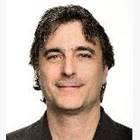When it comes to strokes, the quicker the treatment, the more complete the recovery. If you get to hospital within 4½ hours of a stroke’s onset, doctors can administer clot-busting drugs, or perhaps even extract the blood clot that caused the stroke. With this treatment, your likelihood of recovery is greatly increased and your quality of life much improved.
The problem is that about 25% of strokes occur during sleep. That means for thousands of people in Canada who have a stroke each year, there is no way for doctors to know when it actually started.
When they don’t know, they must go by the rule of “when last seen well,” that is, before the patient went to sleep, maybe some seven to 10 hours earlier — well after the window for clot-busting therapies. This is even more frustrating because recent evidence suggests that many strokes occur at time of waking.
If the timing could be determined reliably, many more patients could benefit from clot busters. Many would recover more fully.
Dr. Christian Beaulieu, a specialist in advanced brain imaging at the University of Alberta, is on the case. With funding from Heart & Stroke donors, his team is using a new magnetic resonance imaging (MRI) technique he helped develop, in order to understand when during sleep strokes most often occur.

My job is to develop novel technologies and find good uses for them.
Building on their groundbreaking work of the last 13 years (also funded by Heart & Stroke), Dr. Beaulieu and his team have developed an MRI method that captures images of sodium in the brain. The results show that in the hours following a stroke, sodium gradually collects in damaged areas of the brain.
By using the sodium-MRI technique on stroke patients for whom onset time is known, the researchers were able to collect valuable data about sodium accumulations over time. They had identified a crucial new metabolic biomarker of stroke progression.
In the next phase, Dr. Beaulieu’s team will use this technology and data to get a clearer picture of when strokes happen. By imaging patients who had a stroke while sleeping soon after they are admitted to hospital, the researchers can begin to amass a trove of useful data about when strokes most often occur.
That in turn will provide doctors with the information and tools they need to use advanced therapies on many patients who had a stroke while sleeping.
“As a research scientist and a biomedical engineer, my job is to develop novel technologies and find good uses for them,” says Dr. Beaulieu, one year in on a three-year grant. “We definitely are doing that here.”
- Know the signs of stroke.
- See more Heart & Stroke research.
